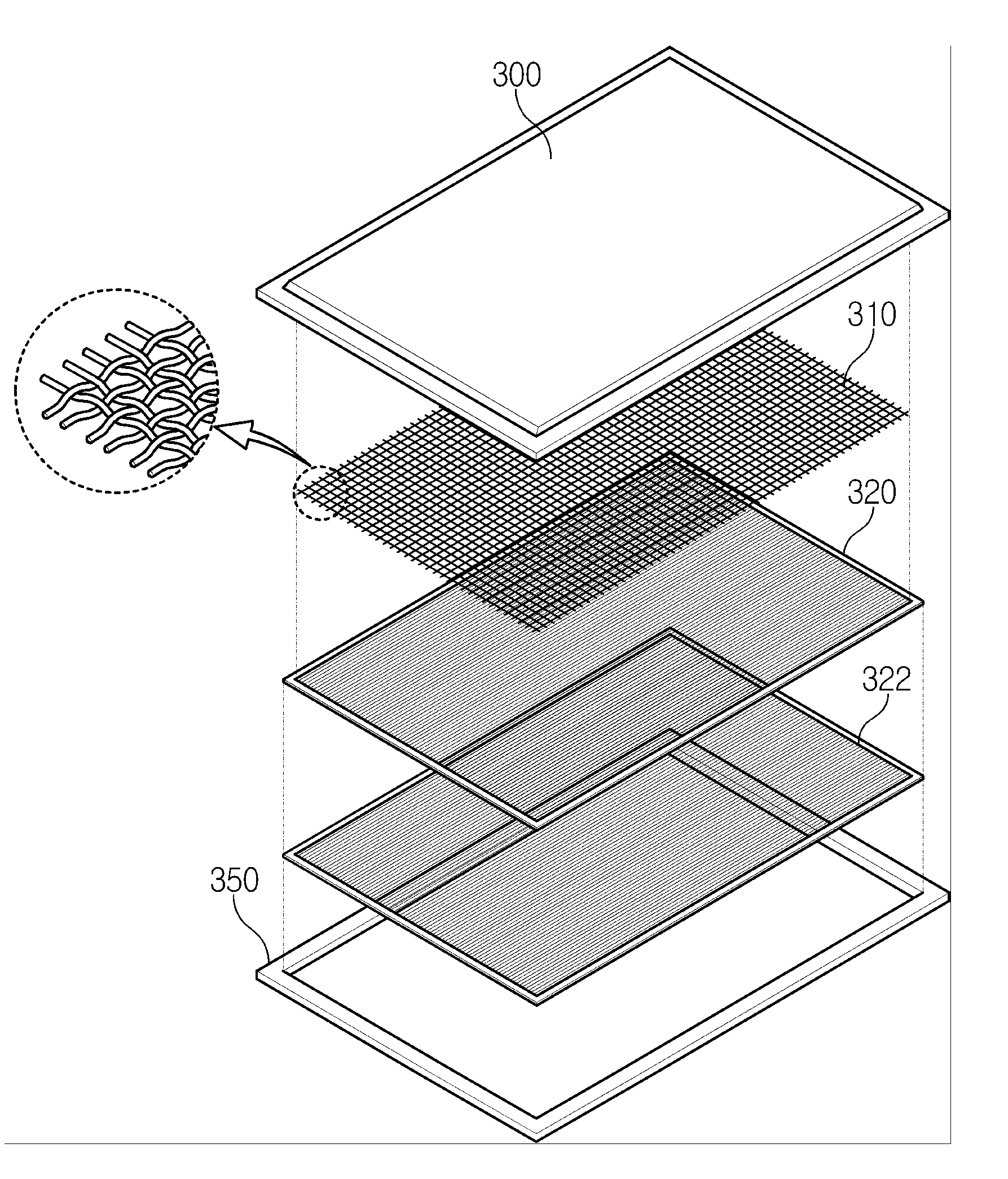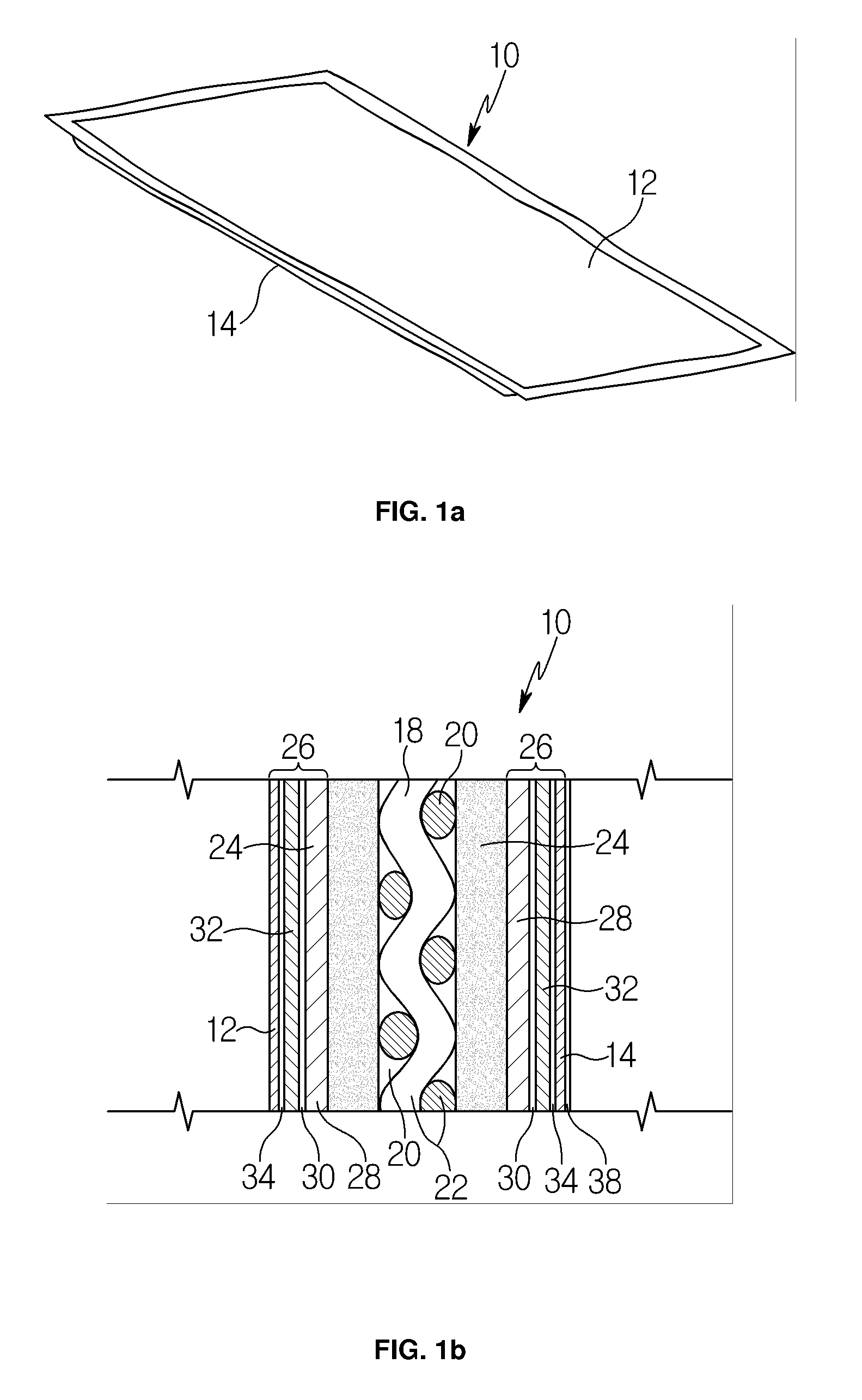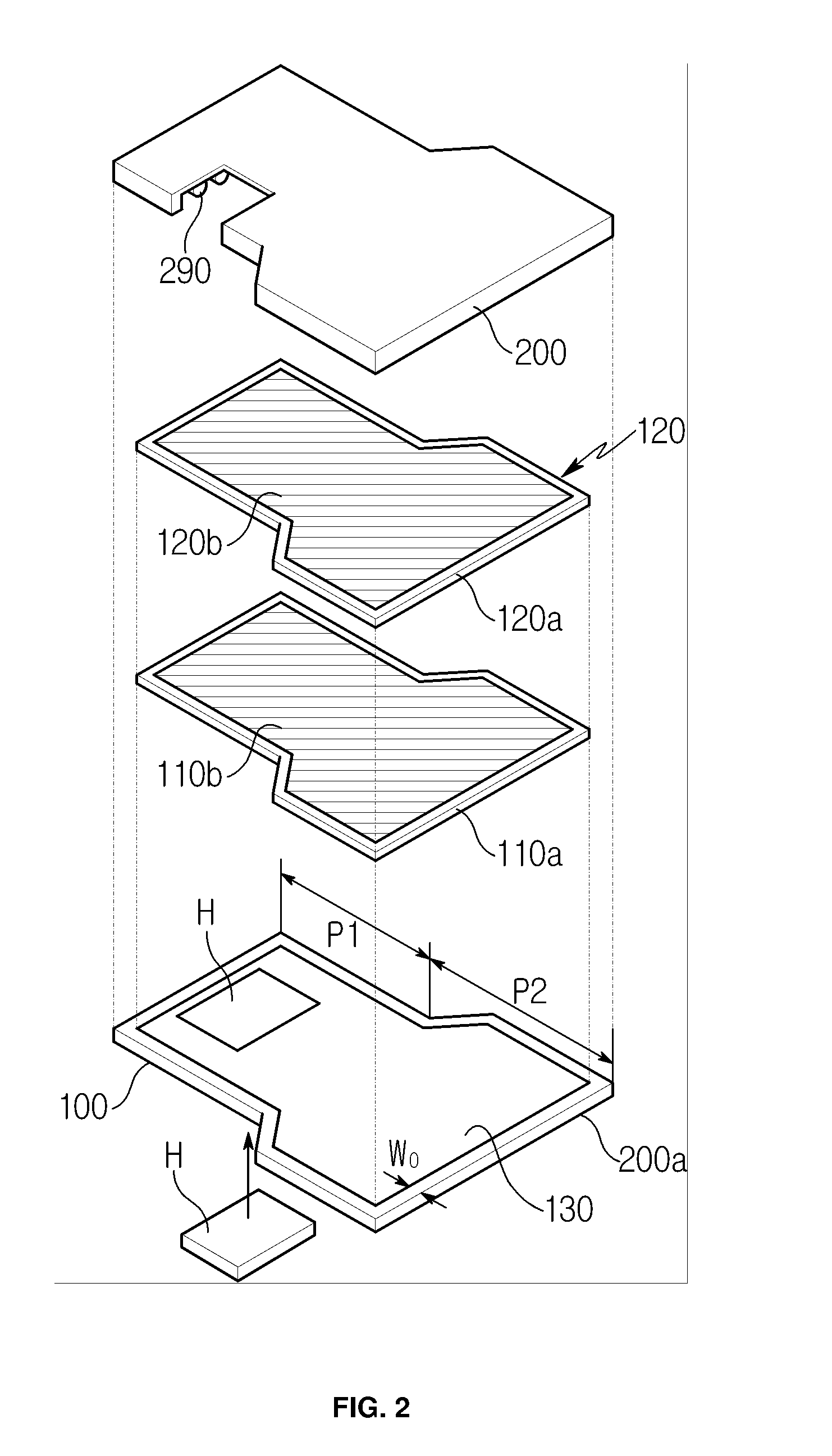Heat Transfer Device and Manufacturing Method Thereof Using Hydrophilic Wick
- Summary
- Abstract
- Description
- Claims
- Application Information
AI Technical Summary
Benefits of technology
Problems solved by technology
Method used
Image
Examples
first embodiment
[0069]FIG. 6 illustrates a flat panel type heat transfer device using the above described hydrophilic wick structure, according to the invention. As shown in FIG. 6, the heat transfer device comprises a casing which comprises an upper plate 400 and a lower plate 450, two sheets of hydrophilic wick structures 420 disposed in the casing, and a support structure 410 such as a screen mesh which is also disposed in the casing. The hydrophilic structure is assembled with coolant loaded in the hydrophilic structure to wet the inner surface. In this case, it is not necessary that coolant be additionally injected between the upper plate 400 and the lower plate 450. Accordingly, the assembly process is simplified.
[0070]FIG. 7 is a sectional view of the heat transfer device shown in FIG. 6. When the heat transfer device is assembled, the support structure 410 brings the respective hydrophilic structures into close contact with the upper plate 420 and the lower plate 450.
[0071]FIG. 8 is a secti...
fifth embodiment
[0082]FIGS. 17a and 17b illustrate a heat transfer device according to the present invention. In the flat panel type heat transfer device, an upper plate 2400 and a lower plate 2450, together constituting a casing, are made of flexible polymer. The heat transfer device includes the above described hydrophilic wick structure 2420 to provide passages for vapor and liquid coolant, and a support structure 2410 to enable the hydrophilic wick structure 2420 to be in close contact with the upper surface of the lower plate 2450.
[0083]In the case of adopting the above described structure, the heat transfer device has high flexibility. Accordingly, the heat transfer device can be used for a heat source having a complex or three-dimensional structure. That is, it has wide applicability. However, since the gap between the upper plate and the lower plate must be maintained at a low pressure, as shown in FIG. 17a, the flexible upper plate 2400 can be brought into close in contact with the through...
PUM
| Property | Measurement | Unit |
|---|---|---|
| Thickness | aaaaa | aaaaa |
| Thickness | aaaaa | aaaaa |
| Thickness | aaaaa | aaaaa |
Abstract
Description
Claims
Application Information
 Login to View More
Login to View More - Generate Ideas
- Intellectual Property
- Life Sciences
- Materials
- Tech Scout
- Unparalleled Data Quality
- Higher Quality Content
- 60% Fewer Hallucinations
Browse by: Latest US Patents, China's latest patents, Technical Efficacy Thesaurus, Application Domain, Technology Topic, Popular Technical Reports.
© 2025 PatSnap. All rights reserved.Legal|Privacy policy|Modern Slavery Act Transparency Statement|Sitemap|About US| Contact US: help@patsnap.com



